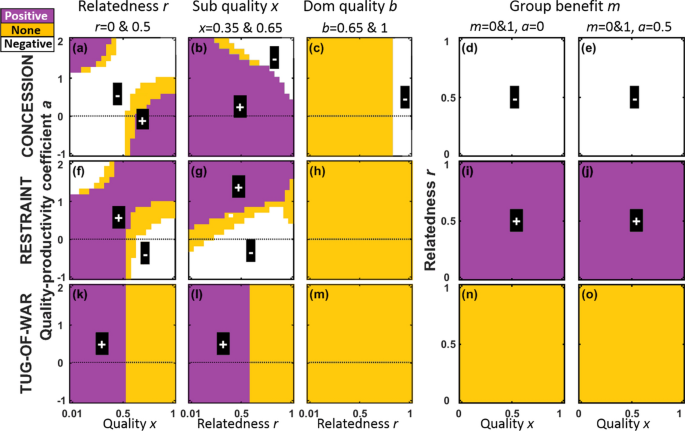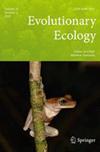生殖偏态理论的检验:综述与概论
IF 2.1
3区 环境科学与生态学
Q3 ECOLOGY
引用次数: 0
摘要
生殖倾斜是指一个社会群体中同性成员的生殖分配不平等。让步、约束和拉锯战倾斜模型试图预测哪些社会和生态因素影响倾斜,同时假设不同的权力动态并做出对比预测。尽管进行了数十年的研究,但支撑物种内偏度变化的因素仍不清楚。个体在离开群体繁衍后代(外部选择)的好处和他们留下来对群体生产力的贡献上都有所不同。个体素质的几个方面可能存在差异,因此个体和物种可能在下属的外部选择与群体生产力之间表现出不同的关联。然而,没有现有的倾斜模型允许这种关联的变化,这里称为质量-生产率系数(QPC)。如果高下属质量与成为一个好帮手有关,例如,如果帮助和质量都随着年龄的增长而提高,那么QPC将是正的。相反,如果在育种能力和帮助效果之间存在权衡或其他对比,那么QPC将是负的。在这里,我们结合了QPC,并对让步、约束和拔河模型得出了新的预测,这些模型有时会改变他们的预测。我们回顾了相关度、主导者竞争优势、群体生产率和下属外部选择对倾斜的影响的实证检验。从可用于计算效应大小的16项研究中,相关性与偏度呈正相关;然而,总的来说,45项研究中的大多数都没有发现任何关联。偏度与外部选项的关联为负或为零,符合约束和拔河模型。群体生产力的影响基本不显著,支持这三个模型。我们的综述强调了未来合作育种研究的有效途径,特别是更多的工作是评估下属的外部选择与下属对群体生产力的影响之间的关系。本文章由计算机程序翻译,如有差异,请以英文原文为准。

Tests of reproductive skew theory: a review and prospectus
Abstract Reproductive skew refers to the unequal partitioning of reproduction by same-sex members of a social group. The concession, restraint and tug-of-war skew models attempt to predict which social and ecological factors influence skew, whilst assuming different power dynamics and making contrasting predictions. The factors underpinning within-species variation in skew remain unclear, despite decades of research. Individuals vary in both the benefit of leaving the group to breed (outside option) and in the contribution they make to group productivity if they stay. Variation is likely among several aspects of individual quality, so that individuals and species may show different associations between the subordinate's outside option and group productivity. Yet, no existing skew models allow for variation in this association, here named the quality-productivity coefficient (QPC). If high subordinate quality is associated with being a good helper, for instance if both help and quality improve with age, the QPC would be positive. If, instead, there is a trade-off or other contrast between breeding ability and helping effect, then the QPC will be negative. Here, we incorporate the QPC and derive new predictions for the concession, restraint and tug-of-war models, that sometimes changed their predictions. We review the empirical tests of the association of skew with relatedness, dominant’s competitive advantage, group productivity and subordinate’s outside option. From 16 studies available to calculate an effect size, relatedness correlated positively with skew; yet overall most of 45 studies reported no association. The association of skew with the outside option was negative or null, fitting the restraint and tug-of-war models. The mostly non-significant effect of group productivity supported the three models. Our review highlights future fruitful avenues for the study of cooperative breeding, especially more work to assess the association between subordinate’s outside option and subordinate’s effect on group productivity.
求助全文
通过发布文献求助,成功后即可免费获取论文全文。
去求助
来源期刊

Evolutionary Ecology
环境科学-进化生物学
CiteScore
3.00
自引率
5.30%
发文量
70
审稿时长
3 months
期刊介绍:
Evolutionary Ecology is a concept-oriented journal of biological research at the interface of ecology and evolution. We publish papers that therefore integrate both fields of research: research that seeks to explain the ecology of organisms in the context of evolution, or patterns of evolution as explained by ecological processes.
The journal publishes original research and discussion concerning the evolutionary ecology of organisms. These may include papers addressing evolutionary aspects of population ecology, organismal interactions and coevolution, behaviour, life histories, communication, morphology, host-parasite interactions and disease ecology, as well as ecological aspects of genetic processes. The objective is to promote the conceptual, theoretical and empirical development of ecology and evolutionary biology; the scope extends to any organism or system.
In additional to Original Research articles, we publish Review articles that survey recent developments in the field of evolutionary ecology; Ideas & Perspectives articles which present new points of view and novel hypotheses; and Comments on articles recently published in Evolutionary Ecology or elsewhere. We also welcome New Tests of Existing Ideas - testing well-established hypotheses but with broader data or more methodologically rigorous approaches; - and shorter Natural History Notes, which aim to present new observations of organismal biology in the wild that may provide inspiration for future research. As of 2018, we now also invite Methods papers, to present or review new theoretical, practical or analytical methods used in evolutionary ecology.
Students & Early Career Researchers: We particularly encourage, and offer incentives for, submission of Reviews, Ideas & Perspectives, and Methods papers by students and early-career researchers (defined as being within one year of award of a PhD degree) – see Students & Early Career Researchers
 求助内容:
求助内容: 应助结果提醒方式:
应助结果提醒方式:


